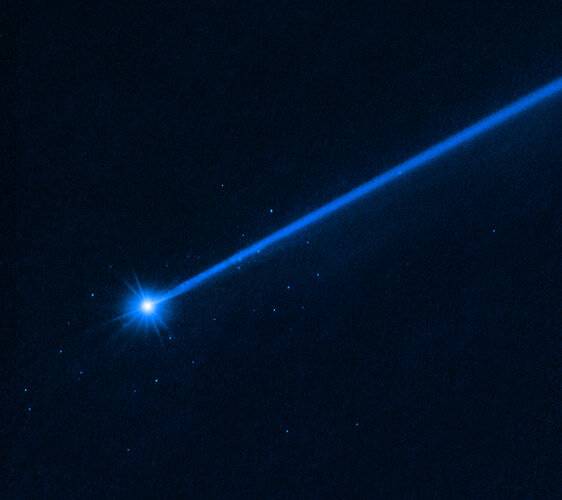
Long ago, Dimorphos may have formed from material shed into space by the larger asteroid Didymos. The parent body may have spun up too quickly or could have lost material after a glancing collision with another object, among other scenarios. The ejected material formed a ring that gravitationally coalesced to form Dimorphos. This would make it a flying rubble pile of rocky debris loosely held together by the relatively weak pull of its gravity. Therefore, the interior is probably not solid, but has a structure more like a bunch of grapes.
It’s not clear how the boulders were lifted off the asteroid’s surface. They could be part of an ejecta plume that was photographed by Hubble and other observatories. Or a seismic wave from the impact may have rattled through the asteroid – like hitting a bell with a hammer – shaking loose the surface rubble.
The DART and LICIACube (Light Italian CubeSat for Imaging of Asteroids) teams have also been studying boulders detected in images taken by LICIACube’s LUKE (LICIACube Unit Key Explorer) camera in the minutes immediately following DART's kinetic impact.
Notes
[1] Just like Hubble and the NASA/ESA/CSA James Webb Space Telescope, NASA’s DART and ESA’s Hera missions are great examples of what international collaboration can achieve; the two missions are supported by the same teams of scientists and astronomers, and operate via an international collaboration called AIDA – the Asteroid Impact and Deflection Assessment.
NASA and ESA worked together in the early 2000s to develop asteroid monitoring systems, but recognised there was a missing link in the chain between asteroid threat identification and ways of addressing that threat. In response NASA oversaw the DART mission while ESA developed the Hera mission to gather additional data on DART’s impact. With the Hera mission, ESA is assuming even greater responsibility for protecting our planet and ensuring that Europe plays a leading role in the common effort to tackle asteroid risks. As Europe’s flagship planetary defender, Hera is supported through the Agency’s Space Safety programme, part of the Operations Directorate.
More information
The Hubble Space Telescope is a project of international cooperation between ESA and NASA.
Contact:
ESA Media relations



